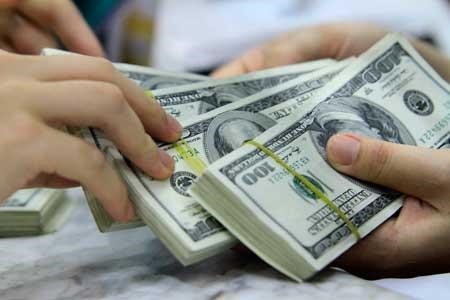
The State Bank of Vietnam (SBV) will tighten lending in foreign currencies in some cases from March 31 in an effort to step up its anti-dollarisation drive.
The State Bank of Vietnam (SBV) will tighten lending in foreign currencies in some cases from March 31 in an effort to step up its anti-dollarisation drive.
Under Circular 24/2015/TT-NHNN, commercial banks will no longer be allowed to provide lending in foreign currency to exporters who do not need it for offshore payments. Such exporters often used to obtain foreign currency loans from banks and would later transfer them into dong to buy machines and materials for their production activities for the domestic market.
 |
| Illustrative image (Source: VNA) |
Short-term loans in foreign currency to meet the short-term capital needs for the export of goods via Vietnam’s border gates will also be prohibited.
However, foreign currency lending will still be available as long-, medium- and short-term loans for offshore payments when importing goods and services, provided that the borrowers have sufficient foreign currency revenue from their production or business activities to repay these loans.
Besides short-term loans to leading petroleum import enterprises that are allocated annual petroleum import quotas by the Ministry of Industry and Trade, allowing them to make offshore payments for imports, commercial banks will also still be allowed to provide loans for overseas investment in key national projects and programmes that the National Assembly, the government or the Prime Minister has approved and for which the Ministry of Planning and Investment has granted overseas investment certificates.
Director of SBV’s Monetary Policy Department Bui Quoc Dung said that previously, the central bank had eased lending in foreign currency to support exporters in the context of an economic slowdown. The exporters had benefited greatly from this previous policy as the lending interest rate in foreign currencies was much lower than that of the dong.
Nguyen Hoang Minh, director of SBV’s HCM City branch, said the tightening of the lending policy would have a negative impact on firms, but it was a necessity for the central bank’s agenda to promote anti-dollarisation in the economy.
Banking expert Nguyen Tri Hieu also said the new policy would affect the competitiveness of exported Vietnamese products. Without the foreign currency loans, whose interest rate is often roughly 6-9 percent lower than that of the dong, input costs for exported Vietnamese products would rise, he said.
Besides this, Hieu forecast that the tightening of lending policy would also push up the demand for loans in dong, causing a hike in the interest rate for loans.
The central bank’s policies in favour of anti-dollarisation have so far proved to have a positive effect. To date this year, the dong versus the US dollar exchange rate has not seen much fluctuation. The dollar price on the unofficial market was even lower than that listed at banks by 20-30 VND.
The dollar price has also slid by 200 VND, from 22,540 VND in early January to 22,340 VND on March 26. Analysts said this was understandable because dollar holders have gradually withdrawn their deposits from the banks.
The latest data from the SBV showed that as of March 10 this year, the mobilisation of foreign currency by the banking system fell by 3.5 percent compared with December 31 last year.
The reduction in US dollars deposited in banks showed that speculators are not interested in foreign currency, the analysts said.
(Source:VNA)





